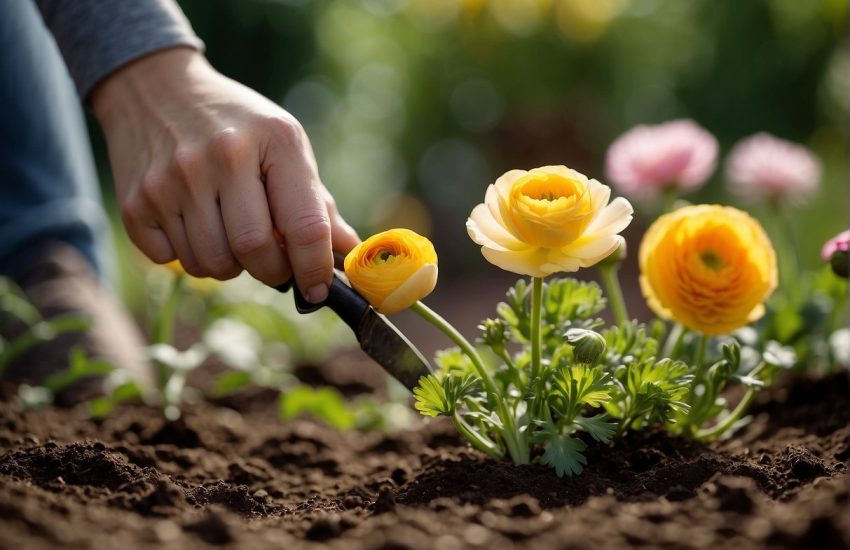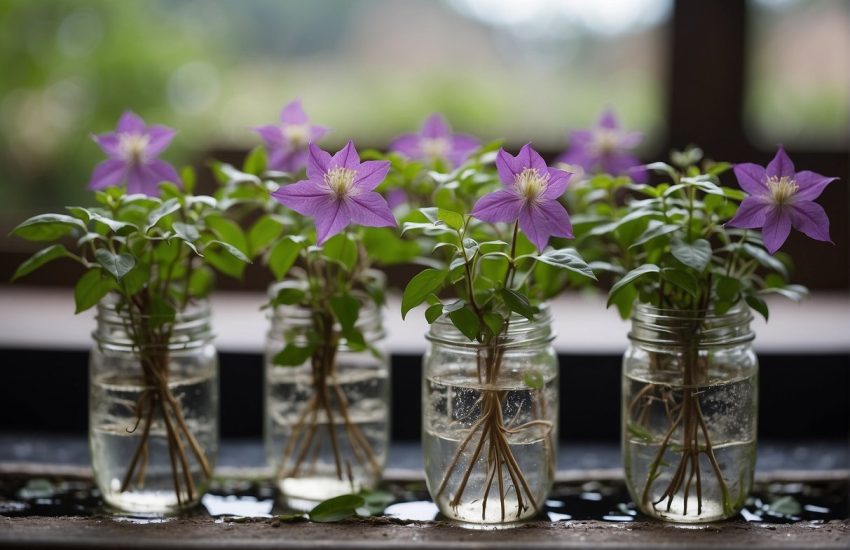Ground Cover Plants That will Thrive in Your Indiana Garden
Looking to add some beautiful plants to your garden in Indiana? Check out our list of 10 ground cover plants that will make your garden look great! These plants are perfect for covering up areas of your yard, reducing erosion, and contributing to soil fertility through nitrogen fixation in the soil.
Leadplant (Amorpha Canescens)
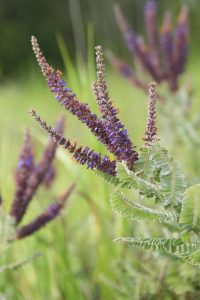
Amorpha canescens, commonly known as Leadplant, is a perennial flowering plant in the family Fabaceae. It is native to North America and widespread across the Great Plains and Midwest. The Leadplant is a small shrub typically grows to 0.3-1.2 m (1-4 ft) tall with a dense, bushy habit. The leaves are alternate, 10-20 cm (4-8 in) long and 2-5 cm (0½-2 in) wide, with a serrated margin and hairy surface. The flowers are purple and borne in dense spikes. The fruit is a brown or black pod containing several seeds.
Leadplant is often used as an ornamental plant in landscaping, as it is drought tolerant and adaptable to a range of soils, including poor, dry, sandy, or rocky ones. It prefers full sun to partial shade but will tolerate light shade. It tolerates drought and poor soils but is sensitive to frost damage. The plant has a deep taproot system that helps it to anchor the soil and prevent erosion. Leadplant can spread aggressively by rooting at the leaf nodes, so it is important to keep it trimmed if you do not want it to take over your garden. Despite this, Leadplant makes an excellent ground cover for areas that are difficult to grow other plants.
Kinnikinnick (Arctostaphylos Uva-ursi)
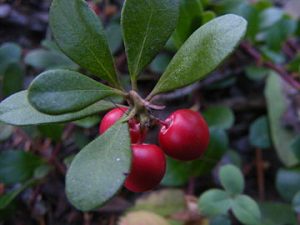
Kinnikinnick (Arctostaphylos uva-ursi) is an excellent ground cover plant that thrives in shady environments. It is native to North America and can be found in many parts of the continent. It is prized for its ability to quickly and densely cover the ground, making it an ideal choice for erosion control or ground cover in difficult areas such as steep slopes, rocky terrain, and shady areas. Kinnikinnick has small, dark green leaves, producing small white flowers in the spring. The fruit of the kinnikinnick is a small, red berry that is popular with birds and other wildlife. It is also resistant to drought and other environmental stressors, making it a good choice for areas that are difficult to maintain. Kinnikinnick grows best in well-drained soils in full sun to part shade. It is drought tolerant and can tolerate some foot traffic. It is often used in landscaping due to its ability to thrive in harsh conditions and its attractive foliage. The kinnikinnick is also an important medicinal plant, with the leaves used to make teas and poultices that can be used to treat various ailments.
Lanceleaf Tickseed (Coreopsis Lanceolata)
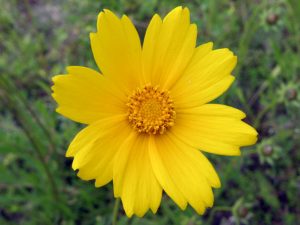
Lanceleaf tickseed (Coreopsis lanceolata) is a perennial flowering plant in the aster family. It is native to North America and can be found in mountainous areas from Montana to northern New Mexico. The lanceleaf tickseed is a small, mat-forming plant that typically grows to 0.4-1 m (1-3 ft) tall, though it can reach 2 m (6 ft) in height at maturity. The leaves are 5-15 cm (2-6 in) long, linear to lanceolate, and mostly basal. The flowers are yellow and borne in small clusters. The fruit is a small achene.
Lanceleaf tickseed can be used as a ground cover in full sun to partial shade. It prefers dry to moist, well-drained soils but will tolerate a variety of soil types. It prefers full sun to part shade and will tolerate some shade. It is drought tolerant once established but can become damaged by prolonged drought. Lanceleaf tickseed is resistant to many types of pests and diseases, including leaf miners and powdery mildew, making it a good choice for areas where you might need disease-resistant plants. The Lanceleaf tickseed has shallow roots that can loosen the soil, so it should be mulched to prevent erosion in areas prone to erosion.
Downy Phlox (Phlox Pilosa)
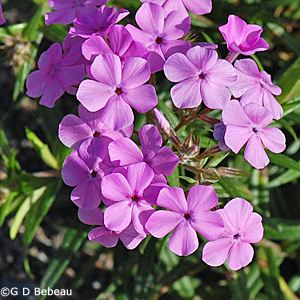
The Downy phlox (Phlox pilosa) is a striking addition to any garden. This hardy plant is native to North America and is known for its ability to thrive in a wide range of climates. Downy phlox (Phlox pilosa) is a species of flowering plant in the family Polemoniaceae, native to eastern North America. It is a herbaceous perennial that typically grows to 30-60 cm (12-24 in) tall and wide, with a basal rosette of leaves and erect stems bearing clusters of 5-petaled flowers. The flowers are pink, violet, or white, with a central boss of yellow stamens. The plant blooms in spring and early summer. Phlox pilosa is found in woods, meadows, and prairies. It is a popular garden plant, grown for its flowers and its attractive foliage. The Downy phlox blooms in the springtime, and its flowers are a favorite of bees and other pollinators. It is also the larval host plant for the Henry’s Elfin butterfly (Callophrys henrici). The Downy phlox is a tough plant that can tolerate many different types of soil and is resistant to most pests and diseases. It prefers full sun but will tolerate light shade. It can grow in a variety of soil conditions, but it does best in fertile, well-drained soils. The plant is also drought tolerant once it has been established. The Downy phlox makes an excellent ground cover in areas where you want the flowers to be the main focus, such as a meadow or rock garden.
Purple Coneflower (Echinacea Purpurea)
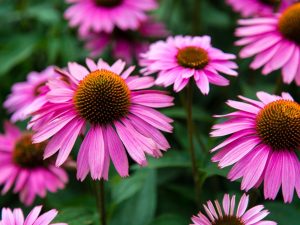
The Eastern Purple Coneflower is a herbaceous perennial that is native to North America. It is a member of the aster family, and its scientific name is Echinacea purpurea. The cone-shaped center of the flower is composed of numerous small, tightly-packed disk florets. The ray florets, which make up the outer portion of the flower, are long and narrow. Eastern Purple Coneflower typically blooms from summer to fall, and the flowers are attractive to bees and butterflies. It also has a long blooming season, making it an excellent source of color in the garden from summer through fall. The leaves are lanceolate, and the stems are hairy. The roots are thick and tapering and can be up to two feet long. The nectar-rich flowers provide food for these insects, and the plant also provides shelter and nesting sites. In addition, the seeds of the Eastern Purple Coneflower are an important food source for birds. The plant is also used in traditional Native American medicine. The roots and leaves are dried and powdered and used to make teas and tinctures. The plant grows to a height of 2-4 feet and prefers full sun and well-drained soil. Once established, it is relatively drought tolerant. The Eastern Purple Coneflower is a beautiful plant that plays an important role in the ecosystem.
Partridgeberry (Mitchella Repens)
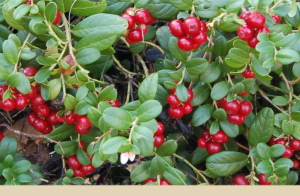
Partridgeberry (Mitchella repens) is a low-growing, evergreen perennial native to North America. The plant gets its common name from the fact that partridges often eat its fruits. Partridgeberry is a member of the madder family (Rubiaceae) and is closely related to bedstraw (Galium spp.) And candystripe (Gentiana spp.). The plant typically grows to 10-20 cm (4-8 inches) in height and has glossy, dark green leaves that are arranged in pairs. The leaves are opposite, oval-shaped, and have a leathery texture. The flowers are white and borne in pairs. The fruit is a small, red berry that is edible and loved by wildlife. Partridgeberry is often used as an ornamental plant, groundcover, or a component of wildflower mixes. It is relatively easy to grow and does not require much care. However, it does prefer moist, well-drained soils and partial to full shade. If you are looking for a low-maintenance plant that will add beauty to your landscape, consider growing partridgeberry.
Wild Bergamot (Monarda Fistulosa)
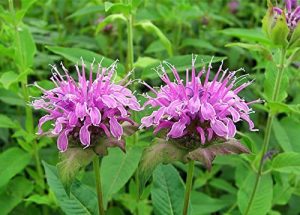
Bergamot (Monarda fistulosa) is a native perennial wildflower in the mint family that blooms in mid to late summer. It is common in fields, meadows, and along roadsides throughout eastern North America. The wild bergamot plant grows 1-3 ft tall and has an upright, bushes habit. The leaves are opposite, lanceolate to oval in shape, and hairy on both surfaces with serrated margins. They are aromatic when crushed. Wild bergamot flowers are pink to lavender in color, arranged in clusters (terminal verticillasters), and have long tubular calyxes that extend beyond the petals. Each flower has four petals fused at the base, four stamens, and a 2-lobed pistil. The fruits are small, brown nutlets. Bergamot is a nectar source for bees and other pollinators. It is also the host plant for several moth species, including the beaded chestnut moth (Parachymia Champlainia) and the striped hairstreak (Satyrium liparops). The flowers can also be used to flavor candy and ice cream. Bergamot is a stylish plant that adds beauty to the garden and habitat of wildflowers. It can be used in meadow gardens, seashore plantings, and natural plantings. The plant is an excellent native plant for the butterfly garden and a natural host plant for the Monarda moth. Bergamot can be propagated from seed, rooted pieces of the rhizome, or by division of a clump. The best time to start a new bergamot plant is in early spring.
Blackeyed Susan (Rudbeckia Hirta)
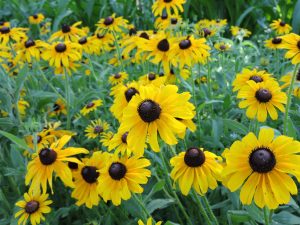
The Blackeyed Susan (Rudbeckia hirta) is a North American wildflower member of the Aster family. It gets its name from the center of the flower, which resembles a black eye. The Blackeyed Susan blooms in the summer and can be found in meadows, fields, and roadsides across the United States. This plant is considered a short-lived perennial, meaning it will grow back year after year for a few years before needing to be replanted. The Blackeyed Susan is easy to grow and does not require much care. It is tolerant of most soils and can even grow in poor-quality soil. This plant prefers full sun but will tolerate partial shade. It is also resistant to deer and rabbits. The plants are low-growing and have flower heads that bloom on top of a long, forked stem. The blooms are typically in shades of white, yellow, or pink. Each head has a short stem, ranging from 7-20 flowers to a length of 30-60 cm (12/4–24 inches) with 5-20 ray florets surrounding the center disk florets. The disk florets are yellow, flat-topped, and come in pairs. The Blackeyed Susan produces small legume pods which contain seeds that will spread by self-proliferation by forming roots at each node and popping out of the soil as new plants.
Sundial Lupine (Lupinus Perennis)
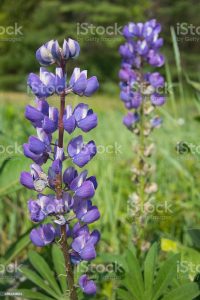
Sundial lupine (Lupinus perennis) is a perennial herbaceous plant in the legume family. It is native to North America and found in woodlands, meadows, and prairies. The plant grows to 30-60 cm (12-24 in), with blue-violet flowers blooming from May to July. The leaves are palmately compound, with 5-9 leaflets. The root system is deep and fibrous, making the plant drought-tolerant. Sundial lupine is an important food source for bees and other pollinators and a host plant for several species of butterfly larvae. It is also a nitrogen-fixer.
Creeping Phlox ( )
)
Creeping Phlox (Phlox stolonifera) is a native, evergreen groundcover that blooms profusely in early to mid-spring. It typically grows 6-12″ tall and spreads indefinitely by aboveground stolons (runner-like stems). This plant produces an abundance of 5-petaled, pink, purple or white flowers, each 1″ across, which cover the foliage in April-May. The flattened leaves are lanceolate to ovate and have entire margins. As the stolons spread along the ground, they often root at the leaf nodes creating additional plants. Although it will grow in full sun, this phlox performs best in part shade on moist, well-drained soils. It is commonly used as a bank cover, pedestrian corridor accent, or slope stabilizer in residential and commercial landscaping. Phlox stolonifera is also drought tolerant, making it an excellent groundcover choice for low-maintenance planting areas. Plants spread rapidly and can become weedy if not properly managed. To control the spread of the plant, it is best to shear off flower buds before they open in late winter or early spring. Flowering will be reduced, but then the plant’s overall vigor will increase, making it less likely to produce viable seeds. If left unpruned, plants will self-seed freely and can quickly become a nuisance in natural areas where they are not wanted.

